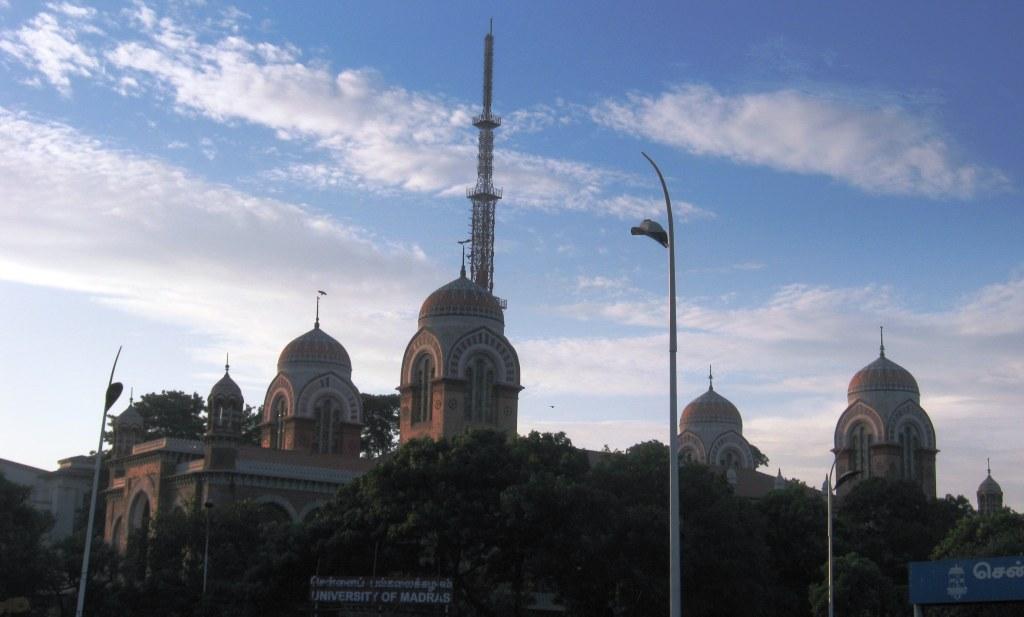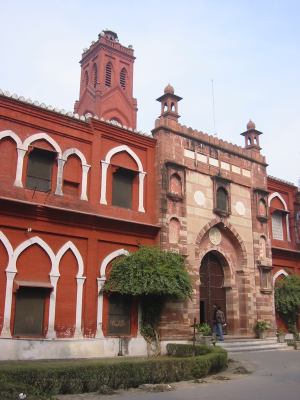 Aligarh Muslim University (AMU) is a government funded, accessible university, originally accustomed by Sir Syed Ahmad Khan as Mohammedan Anglo-Oriental Academy in 1875. The Mohammedan Anglo-Oriental Academy became Aligarh Muslim University in 1920. The capital campus of AMU is amid in the city-limits of Aligarh. Spread over 467.6 hectares, AMU offers added than 300 courses in both acceptable and avant-garde branches of education. According to the 2014 Asia Ranking of Times Higher Education, AMU ranks 3rd a part of universities in India. The university comprises all castes, creeds, religions and genders, and is on the account of Institutes of National Importance.
Aligarh Muslim University (AMU) is a government funded, accessible university, originally accustomed by Sir Syed Ahmad Khan as Mohammedan Anglo-Oriental Academy in 1875. The Mohammedan Anglo-Oriental Academy became Aligarh Muslim University in 1920. The capital campus of AMU is amid in the city-limits of Aligarh. Spread over 467.6 hectares, AMU offers added than 300 courses in both acceptable and avant-garde branches of education. According to the 2014 Asia Ranking of Times Higher Education, AMU ranks 3rd a part of universities in India. The university comprises all castes, creeds, religions and genders, and is on the account of Institutes of National Importance.History
It was accustomed as Madrasatul Uloom Musalmanan-e-Hind in 1875–78, The Anglo–Indian elder Syed Ahmad Khan founded the antecedent of AMU, the Muhammadan Anglo Oriental College, in 1875 accepting already accustomed two schools. He advised adequacy in English and "Western sciences" all-important abilities for advancement Muslims' political influence, abnormally in Northern India. Khan's angel for the academy was based on his appointment to Oxford and Cambridge and he capital to authorize an apprenticeship arrangement agnate to the British model. HH Sir Mohammad Ali Mohammad Khan and the Aga Khan III aswell played a above role in realising the abstraction of Syed Ahmed Khan by accession funds for architecture the Aligarh Muslim University
In the alpha the academy was affiliated with the University of Calcutta but became an associate of Allahabad University in 1885. Around 1900 efforts began to accomplish the academy its own university. Its ambit of courses was broadcast and a girls academy was added in 1907 afore it became the Aligarh Muslim University in 1920. The Aligarh Muslim University Act of 1920 fabricated it a axial university. The university was advised to alternation Muslims for government account in India and adapt them for avant-garde training in British universities.
In 1927, a academy for the dark was accustomed and, the afterward year, a medical academy was absorbed to the university. By the end of the 1930s, the university had developed an Engineering faculty. Syed Zafarul Hasan, abutting the Aligarh Muslim University in aboriginal 1900s as arch of Philosophy Department, administrator Adroitness of Arts. He was a pro-vice adjudicator afore his retirement.
Before 1939, adroitness associates and acceptance accurate an all-India nationalist movement. After 1939, political affect confused against abutment for a Muslim agitator movement. Acceptance and adroitness mobilised abaft Muhammad Ali Jinnah and the university became an centermost of Pakistan Movement The university's academic arch is the Chancellor, currently Mufaddal Saifuddin is the Chancellor, admitting it is a titular figure, and is not complex with the circadian active of the university. The Adjudicator is adopted by the associates of university Court, a physique with associates fatigued from all walks of life.
Ibne Saeed Khan, the bygone Nawab of Chhatari state, is the accepted Pro-Chancellor.
Currently Zameer Uddin Shah is the Carnality Chancellor. Shah is the 38th Carnality Chancellor. Vice-Chancellor is appointed by the President of India on the advocacy of the Court.The Court is the Supreme administering physique of the University and contest all the admiral of the University, not contrarily provided for by the Aligarh Muslim University Act, the Statutes, the Ordinances and the Regulations of the University.
Prof Habibur Rahman, above carnality adjudicator of Agra University is the accepted Honorary Treasurer.






